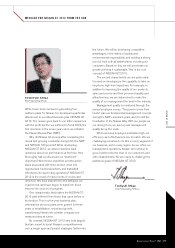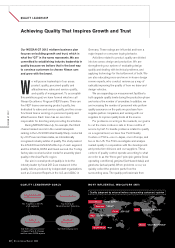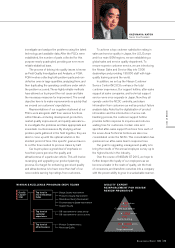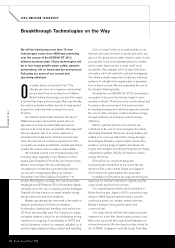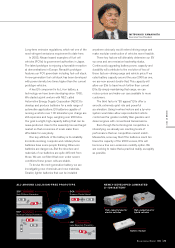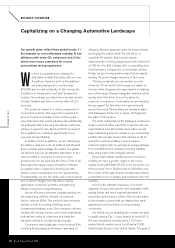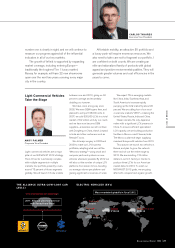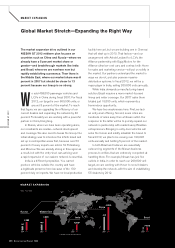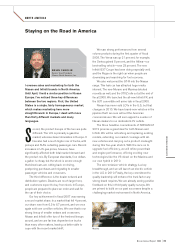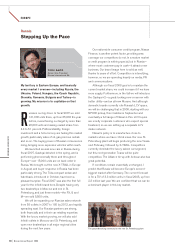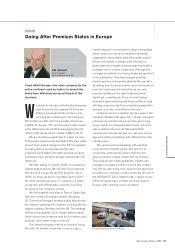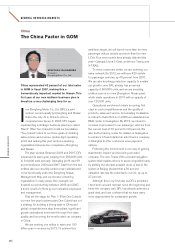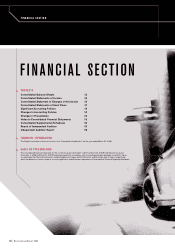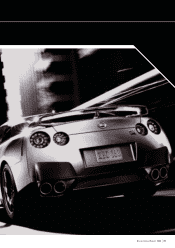Nissan 2008 Annual Report Download - page 33
Download and view the complete annual report
Please find page 33 of the 2008 Nissan annual report below. You can navigate through the pages in the report by either clicking on the pages listed below, or by using the keyword search tool below to find specific information within the annual report.
COST LEADERSHIP:
PURCHASING COST REDUCTIONS
Complexity
/diversity
reduction
Business
growth
Logistics
improvement
Deep localization
Spec challenge
Material
optimization
Volume
per parts increase
Productivity improvement
3-3-3 activity
NISSAN GT 2012 Growth
TrustSupplier Nissan
Alliance
Component
FY00-01
NRP
FY02-04
NISSAN
180
FY05-07
NISSAN
Value-Up
FY08-12
NISSAN GT 2012
20% 12%
+LCC
15% Accelerate to
5 percent/
year pace
A-platform vehicle launched in 2010: 30% lower costs
than current March (Micra)
31
Nissan Annual Report 2008
NISSAN GT 2012
HIROTO SAIKAWA
Executive Vice President
The third challenge is to reduce inbound logistics
costs. We are focusing on improving supply chain
efficiency, from packaging to transport distance,
assembly site location, and production volume
fluctuations. We also want to eliminate double
handling by suppliers and our plants. We plan to
reduce transport distance in our Xianghan plant in
China by 40 percent and at our Mexico plant by 45
percent through localization, near-site supplier parks,
and supplier onsite enhancement.
The next element is the cost of raw materials. We
will tackle all aspects of this, from material usage
reduction, scrap recycling expansion to material
specifications. We see this challenge is becoming
more and more important under the current
economic circumstances.
Beyond these improvements in operational
efficiency, we are also working hard on technical
breakthroughs. We have already made major
reductions in the precious metals used in our
catalytic converters, and our usage of precious
metals as catalysts per vehicle will be cut in half by
2010. We are also focusing on recycle and re-use
policies to cope with the volatile and inflationary
levels of raw material prices.
The last challenge is to optimize the
specifications themselves. We will do this during the
planning phase of projects—and the preparatory
phase as well—to avoid any over-specification or
“cost creep” resulting from specification changes in
the middle of project preparation.
That summarizes our major challenges during
NISSAN GT 2012 related to cost leadership. We
began all the activities mentioned with our suppliers
last year in preparation for the launch of this midterm
plan, and we are running at full speed to deliver the
projected results from the first year onward. We are
even extending its scope to all expenditures—
including sales and marketing expenditures and G&A
expenses—to reap the full benefit of this strategy.
Finally, I must stress that our activities should all
start from genba—the operational area or supplier
floor. The steps include identifying the problems and
issues, extracting opportunities for improvement,
pushing breakthroughs in Nissan’s system, returning
to the genba with viable solutions, and then ensuring
the improvements are made. I am convinced that
staying with this principle—and using transparent
processes and clear, timely communications—will
reinforce mutual trust with our suppliers and be a
driver for Nissan’s success.


